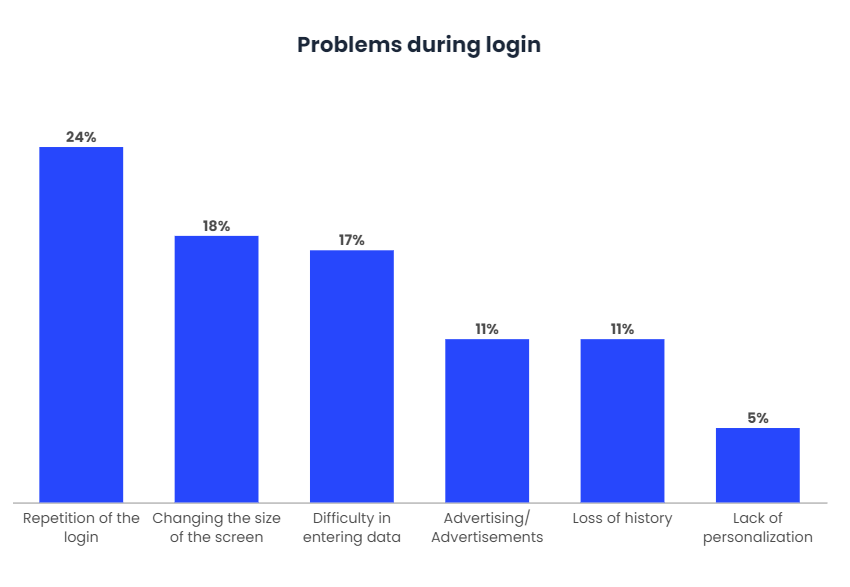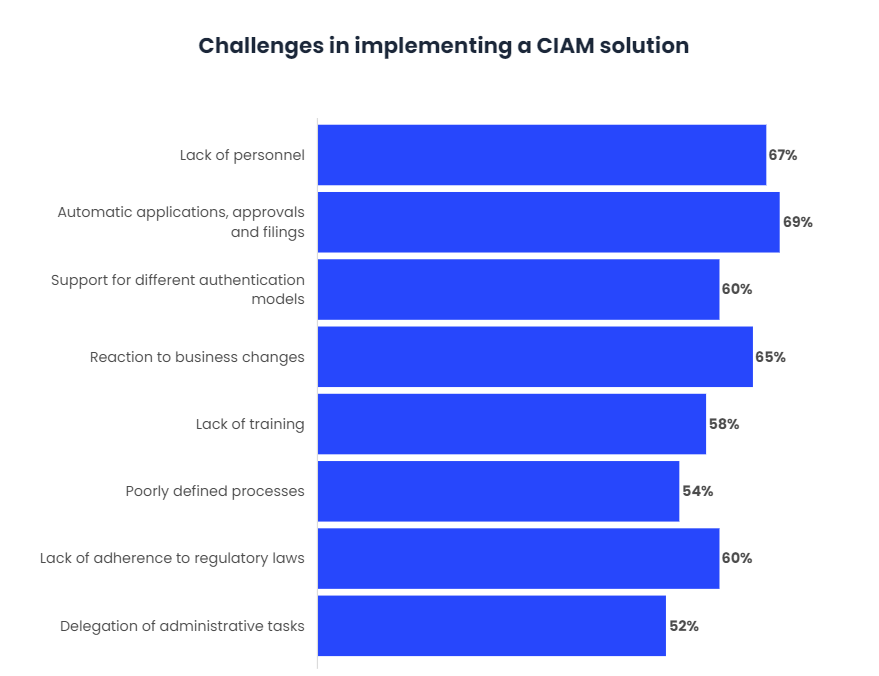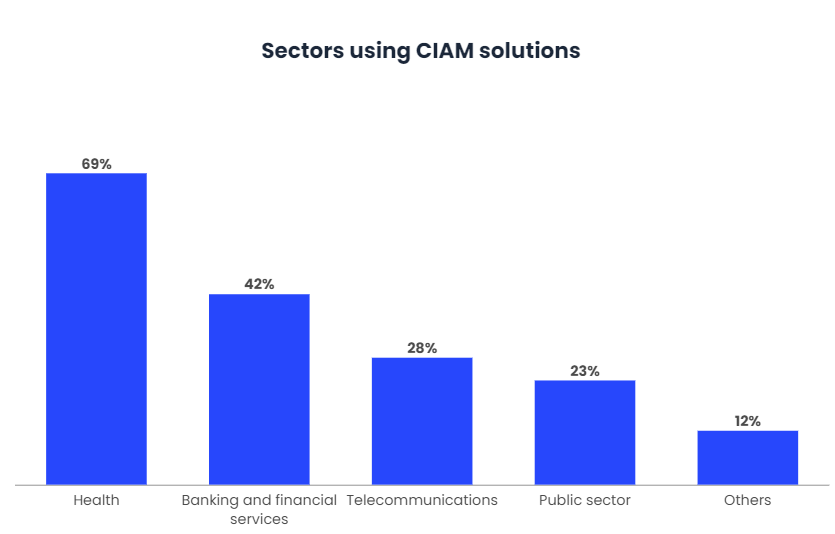CIAM, the solution for a satisfying digital experience

Around the world it is known that today companies must focus on Digital Transformation initiatives to remain competitive, regardless of industry. However, companies that manage the identities of their own customers have difficulty creating a modern digital experience.
To successfully execute a Digital Transformation initiative and provide customers with a seamless experience, Customer Identity and Access Management (also known as CIAM) has emerged.
It’s a software solution that combines login verification with customer data storage and monitoring in a single location that links to all customer-facing business systems. CIAM provides a centralized customer database that links to all other applications and services each company has.
In its simplest form, a CIAM solution has two aspects:
The customer-facing side with self-service fields for password, name, user, email, and data protection consent. Authentication features such as single sign-on, social profile integration, Multi-Factor Authentication (MFA), and choice of communication preferences help improve the user’s online experience.
And the business point of view, it has a number of useful features that can improve security and the collection of customer data while providing useful data to marketing and sales departments. The data that is collected about each customer can be linked to the company’s customer relationship management (CRM) software to benefit the sales team.
The virtues are innumerable
A secure, hassle-free sign-in experience is the minimum that today’s customers expect from a modern organization. However, they are not the only virtues of this solution.

A basic CIAM system can provide many advantages for a company and its customers, including:
- Simplified customer experience
A simplified customer experience is shown to current and future customers as an up-to-date organization concerned with providing a simple sign-in.
By providing an easy sign-in experience for applications and services, encourage customers to try more of their digital offerings. The end result is a customer that is more integrated into the digital ecosystem, without any additional effort on the part of the company.
For example, implementing single sign-on through a customer identity and access management system means that a customer only needs one account for all of their digital touchpoints.
Regardless of the device from which customers log in, they will benefit from not having to repeatedly log in to different services over and over again, encouraging repeated use of applications and services.
- Data and account security.
A standard CIAM system provides essential security features that protect both data access and account access. For example, with risk-based authentication, each customer’s usage and sign-in patterns are monitored, making it easier to detect unusual (and therefore potentially fraudulent) activities.
For use cases where an additional layer of security is required, you can enable Multi-Factor Authentication (MFA), which verifies a customer’s identity by requiring a second step, such as entering an SMS code or clicking an email link.
Its secure sign-in procedures ensure that customers are protected using those services, which is essential with the number of data breaches that have occurred in recent times.
- Scalability and uptime
With only one individually created customer identity management system for each company, reliability is maximized and the need for resources is kept to a minimum.
A centralized sign-in system for all applications and services makes it easy to add new services as they connect. A cloud deployment can quickly increase or decrease based on usage, and automatic failover can reduce downtime to virtually zero.
- A unified view of each customer
By connecting data collected from all services and websites, you get a complete overview. With a complete picture of everything a user has done since the first time they visited the website, each company will have access to very detailed real-world data.
Companies can use this data to monitor customer journeys across multiple applications and services, design new products or special offers, and direct their customers to options that benefit both.
When they understand their customers more deeply, each organization can reach them more easily and serve them better. All of this adds up to more revenue and lower acquisition and retention costs.
- Compliance with privacy rules.
Privacy compliance is a critical aspect of any company that handles personal customer data and an essential part of any online business. The GDPR is just one example of privacy laws that have a global reach, with their effect on any information you enter or leave the EU. Most Western countries have similar regulations or are in the process of enacting similar laws, and the rest of the world is catching up quickly.
A CIAM system can also be adapted to meet the regulatory requirements of different regions, which is essential for a global business.
CIAM 2.0
Without detracting from the benefits offered so far by the management of access and identity of the client, it has been taken a step further with the emergence of CIAM 2.0, which without forgetting all the above virtues offers new benefits that can favor companies.
- Advanced login options
In the world of CIAM 2.0, a company can gain a huge advantage by implementing new and advanced login options that have not yet been widely adopted. These sign-in methods further enhance the customer experience and their trust.
Password-free sign-in simplifies and streamlines the authentication process while making it more secure. It also helps to present each company as a modern and reliable organization that uses the latest technology to protect its customers.
Password-free sign-in uses a customer’s email address or phone number to send them a unique link they click to sign in. Other options include:
- One-Touch Login, which allows customers to log in with a generated link sent to their email address or a one-time password sent to their phone. However, unlike passwordless login, the client does not need to be an existing user on the system and no credentials are sent. In other words, the customer gets the benefits of secure access without the commitment to create an account.
- Smart Login, on the other hand, offers users fast and secure sign-in for the Internet of Things (IoT) and smart devices. This system delegates the authentication process for smart TVs, game consoles, and other IoT devices to another device that is easier and more secure to enter and manage passwords.
- Optimized data collection
As customers become more cunning and cautious in delivering their data, companies can leverage CIAM 2.0 to collect information more respectfully and through different session modes:
- Anonymous login allows you to assign an ID to anonymous users and use it to track the customer’s travel strips through the web. If these users proceed to subscribe to a service, this ID becomes a non-anonymous ID, allowing you to see which paths customers tend to follow, as well as help monitor traffic.
- The progressive profile allows you to collect customer data over time as needed. You can start by creating a very basic profile with the simplest login details (name and email, or a social login request for these details only). You can then request more detailed information as needed, depending on the products customers use. The progressive profile can be used to measure how much customers trust the company by offering the opportunity to add more information without being required.
- Social login can be as risky as it is beneficial in today’s digital environment when major social providers are plagued by data breaches and account breaches. Carefully, social login can be a great way for customers to access your services.
- Consent management
As part of privacy compliance, companies should be clear with customers about their consent to data collection and communication.
CIAM 2.0 provides tools to manage a customer’s consent to give them understanding and control over such permission. Consent management involves requesting approval during registration and authentication and provides the ability to modify existing permissions and apply the new ones retroactively.
How do companies benefit?
Looking at all the benefits of a CIAM system, it becomes clearer than ever the need for most companies to reinvent their initial contact with their customers.

This is an ongoing process, as many companies are currently engaged in a process of moving away from simple customer access to more complex data monitoring, providing them with a better understanding of each Consumer.
A situation that, together with the beginning of a new era governed by a complex ecosystem of data protection laws, leads companies to keep up if they want to continue to operate on a global scale.
As digital transformation continues to change customer expectations, businesses will also need to grow and change. A CIAM solution can help achieve this with customer account information, including data, consent, and activity.

Currently, CIAM solutions are used in a wide variety of sectors ranging from retail and banking to healthcare. However, until 2024, it is estimated that the health sector will be the main adopter of CIAM solutions worldwide.
This growth is mainly due to the health sector being one of the most targeted sectors for cyberattacks, as healthcare organizations collect and store massive amounts of valuable personal information, including highly confidential data, such as names, social security numbers, addresses and dates of birth.
To effectively address the growing threats of cybercrime and online fraud, healthcare providers are increasingly investing in innovative tools and systems.
Conclusions
Customer identity and access management has many great features that ensure consumers are at the center of business strategy. However, this does not mean that each company has to change everything at once.
It’s important for organizations to start the change from a point where they feel comfortable and scale their business needs to match their digital maturity level. The progressive adoption of a CIAM solution can bring great benefits to companies.
On the other hand, this solution provides the flexibility that companies require to accommodate the latest technologies and trends that extend their businesses outside the traditional perimeter. It provides enormous benefits to the organization in terms of complying with growing compliance reforms and secure access to personal information, reducing data breaches. It also lowers the burden on IT due to the self-service functionality it offers.


